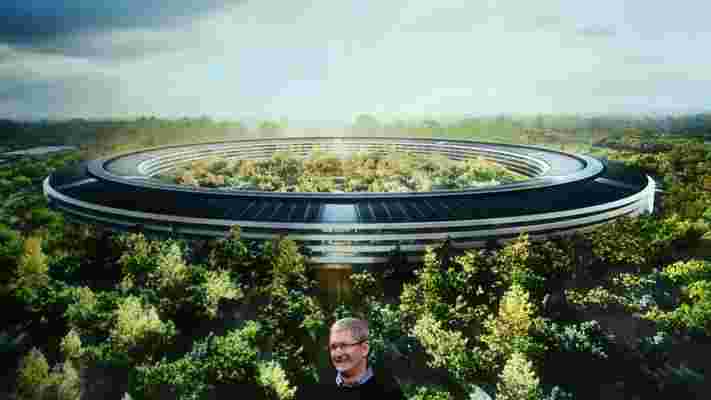It could be called the most exciting campus built this century . What we're talking about, of course, is Apple's bold 175-acre, Foster + Partners –designed campus. The project has been in the works for years, and was actually discussed during Steve Jobs final public appearance before his death on October 5, 2011. It was on that day that Jobs addressed a group of Cupertino council members to pitch his vision for the plot of land that would eventually his company.

Now, nearly six years later, and the dream has nearly turned a reality. As of April, some 12,000 Apple employee began making the roughly two-mile trek from their old offices at Infinite Loop to Apple Park (as the new campus is being dubbed). And while sections of the project are still being worked on, Apple's chief designer, Jonathan Ive, and his team of designers are planning to move into the space this fall. His move to the campus is among the most important of the thousands of employers. Why? Because Ive was the man who helped oversee the construction of the ring-shaped structure.
This content can also be viewed on the site it originates from.
In a recent interview with WSJ Magazine , Ive revealed his initial feelings about the new campus, as his team prepares to move in, and photos of the building's interior emerge. "There's the same rather strange process you go through when you finish a product and you prepare to release it—it's the same set of feelings," he explained to the WSJ in regards to the anticipation of the new space. "That feelncouragingly healthy, because I would be concerned if we lost that sense of anxiety. I think that would suggest that we were not as self-critical, not as curious, not as inquisitive as we have to be able to be effective and do good work."
This content can also be viewed on the site it originates from.
And doing good work was certainly of major importance to Steve Jobs. Which is why among his final wishes was to create a campus that allowed his team the best chance of succeeding. To that, Jobs wanted his colleagues to feel complete comfort in creating the best products possible. Ive's words echo the type of sentiment Jobs was striving towards. "I'm just looking forward to going to see an engineer I'm working with on something, to sit there and perhaps walk out and sit outside for a bit with him, to be able to go to the workshop and start to see how we're building something," said Ive. What Ive is referring to is the roughly 9,000 trees that will be planted throughout Apple's campus (with variations including apple, plum, apricot, and other fruit trees). This, of course, was Jobs vision. A campus that harnessed creativity from the same source Jobs did, throughout nature. Indeed, it was during a walk through London's Hyde Park that the former Apple CEO envisioned the new campus that's about to come to fruition.
This content can also be viewed on the site it originates from.
Inside of the ring-shaped campus, the space will be divided into pods. These pods are essentially open workspaces that can be configured to different sizes, all based on the project or meeting at hand. There will be eighty such pods on each of the four floors in the building. Ive's WSJ interview also revealed how the furnishing has been custom built by Japanese designer Naoto Fukasawa. What's more, the pods will be soundproof, featuring large collaboration tables made from European white oak. Much like the sleek, minimalist designs Apple is known for, the pods will also be absent of any visible cables and wires. Instead, those will be hidden beneath the floor.
This content can also be viewed on the site it originates from.
After all the employees move in and the dust settles, many will hope the new campus will quickly be used to showcase a major new product announcement.
